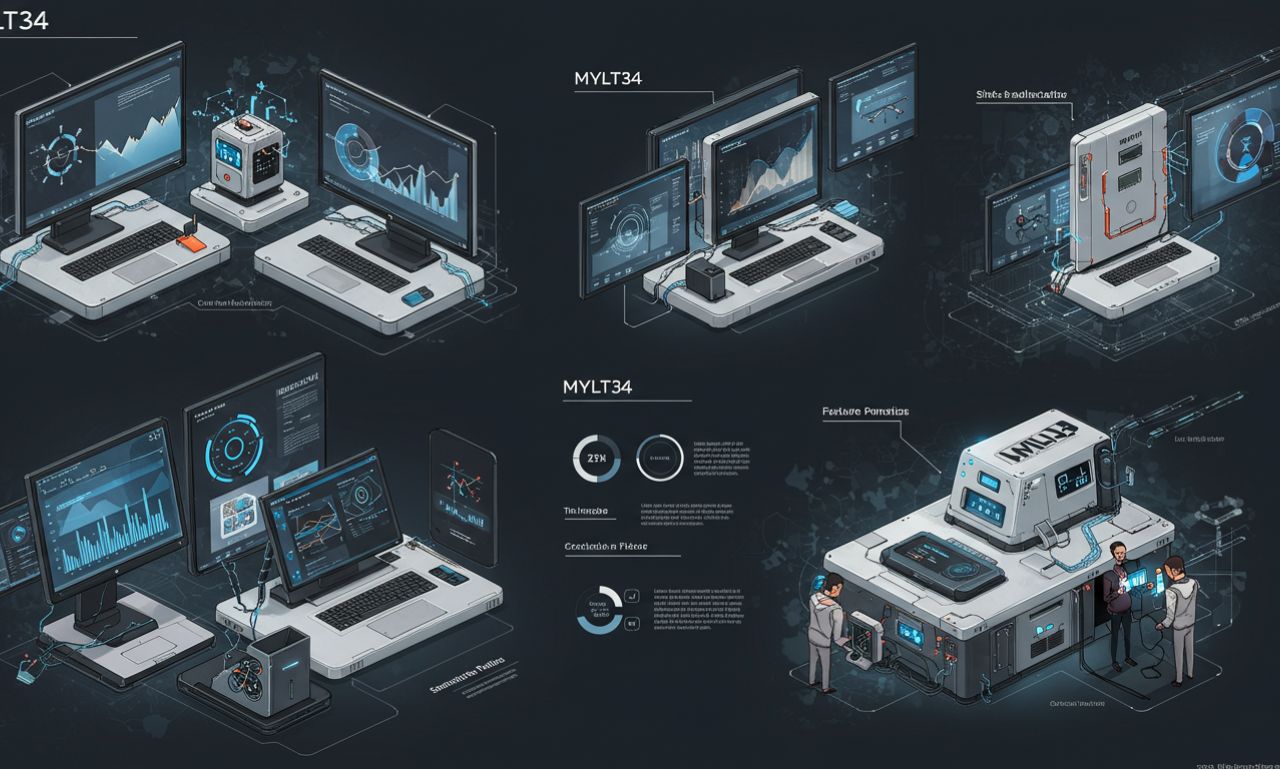
In today’s fast-moving digital landscape, companies and individuals constantly look for smarter ways to organize work, cut down repetitive tasks, and improve efficiency. Among new solutions, Mylt34 has started to capture attention as an all-in-one platform that blends task management, automation, and collaboration.
While some see it as a next-generation productivity engine, others treat it as just another tool in a crowded market. The truth is somewhere in between. By unpacking its features, business applications, benefits, and risks, we can better understand how Mylt34 fits into the modern world of workflow automation.
What Is Mylt34?
At its heart, Mylt34 is a software platform focused on workflow automation and task management. It is built to simplify how teams and organizations handle work by automating routine steps and providing centralized coordination.
Unlike traditional task trackers that only record to-dos, Mylt34 allows users to set rules, triggers, and actions that run automatically. For example, a marketing team could create a workflow where every new blog draft is automatically assigned to an editor, and once approved, the system schedules social media promotions.
The platform combines this automation layer with collaboration tools, dashboards, and integrations, making it more versatile than single-purpose apps.
How Mylt34 Works
The process of using Mylt34 generally follows a clear path:
-
Setup: Users sign up, create an account, and configure team details.
-
Workflow creation: Tasks and steps are mapped out, often using drag-and-drop builders.
-
Automation rules: Triggers and conditions are added, such as “when a file is uploaded, notify the team.”
-
Integration: Mylt34 links to other apps like Google Workspace, Slack, or Microsoft Office.
-
Execution & tracking: The system runs workflows in real time while teams monitor progress through dashboards.
-
Optimization: Performance metrics highlight bottlenecks, helping teams refine processes.
This balance of automation and manual oversight makes Mylt34 approachable yet powerful.
Core Features of Mylt34
Mylt34 offers a wide range of functions to support both small teams and larger organizations:
-
Workflow Automation: Automates repetitive steps such as reminders, approvals, and updates.
-
Task Management: Assigns, tracks, and prioritizes tasks across individuals or departments.
-
Collaboration Tools: Enables comments, mentions, and file sharing within the same platform.
-
Custom Dashboards: Provides real-time data visualization and performance tracking.
-
Integration Capabilities: Works with popular third-party applications and APIs.
-
Notification System: Sends alerts via email, mobile, or desktop when deadlines approach or changes occur.
-
Access Controls: Manages roles and permissions to ensure security and compliance.
-
Templates: Includes ready-made process flows for areas like marketing campaigns, onboarding, and project management.
-
Analytics: Reports on efficiency, delays, and usage patterns to improve decision-making.
Together, these features position Mylt34 as more than a to-do list—it’s a workflow ecosystem.
Why Businesses Choose Mylt34
Organizations exploring Mylt34 often cite several advantages:
-
Time savings: Repetitive manual tasks are automated, freeing staff for creative work.
-
Cost efficiency: Optimized workflows reduce wasted hours and lower operational expenses.
-
Consistency: Automated systems apply the same rules every time, minimizing human error.
-
Scalability: The platform grows with a business, from small teams to enterprise operations.
-
Visibility: Leaders gain oversight into progress and performance without constant check-ins.
-
Collaboration boost: Shared boards and real-time updates keep everyone aligned.
These benefits make Mylt34 appealing to startups aiming for lean growth and enterprises seeking smoother operations.
Use Cases of Mylt34
The strength of Mylt34 lies in its adaptability across industries. Here are some practical applications:
Marketing Campaigns
Plan content calendars, automate social media scheduling, and route approvals to managers.
Project Management
Track milestones, assign subtasks, and monitor dependencies across large initiatives.
Customer Support
Automate ticket routing, prioritize urgent cases, and monitor SLA compliance.
Human Resources
Manage new employee onboarding, assign training, and streamline document collection.
Finance Departments
Automate invoice approvals, track budgets, and generate financial reporting reminders.
IT and DevOps
Schedule updates, automate monitoring alerts, and integrate with system logs.
Because it integrates with many external apps, Mylt34 can slot into different workflows without replacing existing tools.
Strengths of Mylt34
Several aspects help Mylt34 stand out in a competitive market:
-
Flexibility: Supports both simple task lists and complex multi-step workflows.
-
Ease of use: A user-friendly interface allows even nontechnical teams to adopt it quickly.
-
Customization: Workflows and dashboards can be adjusted to match unique business needs.
-
Integration power: Linking to external apps expands functionality dramatically.
-
Future readiness: The platform shows potential for adopting AI-driven features and predictive automation.
These strengths help explain its growing popularity.
Challenges and Limitations
No platform is perfect, and Mylt34 faces its share of challenges:
-
Learning curve: Complex workflows may overwhelm new users.
-
Integration gaps: If a critical app isn’t supported, adoption may stall.
-
System reliability: Downtime or glitches can disrupt business operations.
-
Security concerns: With sensitive data involved, strong encryption and compliance are essential.
-
Cost management: Scaling usage may increase subscription or infrastructure costs.
-
Over-automation: Too many automated processes can reduce flexibility and oversight.
Addressing these issues will be key to Mylt34’s long-term success.
How to Implement Mylt34 Effectively
For organizations considering Mylt34, a structured rollout plan is best:
-
Start with a pilot project involving a small team.
-
Document existing processes before attempting automation.
-
Automate high-impact tasks first, such as approvals or reminders.
-
Train team members on the platform’s features.
-
Set clear governance rules for workflow creation and changes.
-
Evaluate and refine based on reports and feedback.
-
Scale gradually to larger projects and departments.
Taking it step by step ensures smoother adoption and better results.
Risks to Consider
Companies should weigh potential risks when adopting Mylt34:
-
Vendor reliability: Dependence on the platform ties business continuity to its stability.
-
Data portability: If processes are deeply embedded, switching tools later may be difficult.
-
Hidden costs: Advanced features or integrations could add unexpected expenses.
-
Over-dependence: Automating everything may limit adaptability when unusual cases arise.
Balancing automation with human oversight is key to mitigating these risks.
Future Outlook of Mylt34
Looking ahead, Mylt34 may evolve in exciting ways:
-
Artificial intelligence features: Smarter task assignment, anomaly detection, predictive analytics.
-
Expanded integrations: More third-party apps and open API support.
-
Mobile improvements: Stronger mobile apps and offline functionality.
-
Industry-specific templates: Tailored workflows for healthcare, retail, finance, and more.
-
Community marketplace: A hub where users share custom workflows and templates.
If these developments come to life, Mylt34 could become a leading name in workflow automation.
Conclusion
Mylt34 represents a fresh approach to managing work in a digital world. By combining automation, collaboration, and analytics, it empowers businesses to save time, reduce costs, and operate more efficiently.
Still, success depends on how thoughtfully organizations implement it. Caution, gradual scaling, and ongoing optimization are critical. For businesses open to innovation, Mylt34 is worth considering as a central tool for future-ready operations.







